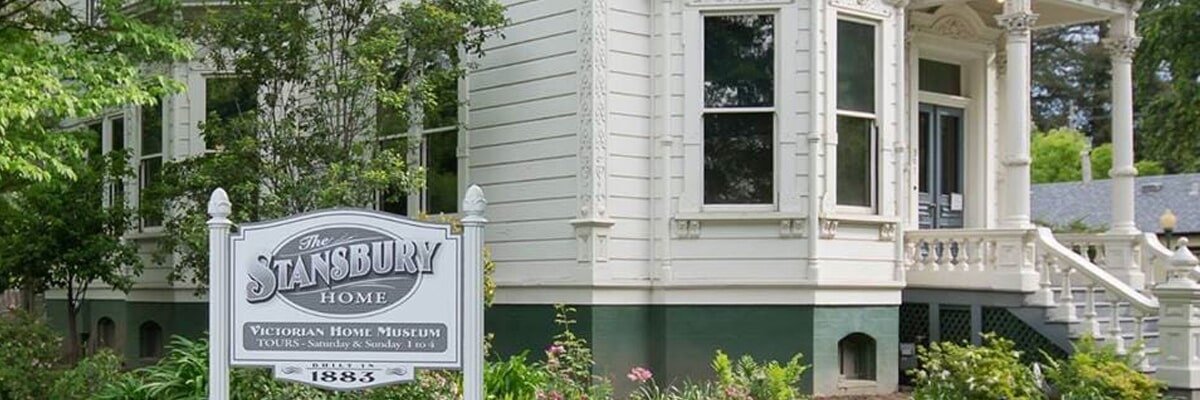
On February 17, 1852, Oscar Stansbury, the fourth of nine children, was born to Washington Middleton Stansbury and Emily Ayers–the only son of three offspring to survive childhood. Oscar attended the Masonic Male Academy, graduating at the age of fifteen. In 1867 he began two years of pre-med courses at the University of Mississippi and followed this with a degree from the University Of Maryland School Of Medicine in Baltimore.
One school holiday, Oscar traveled to the town of Greensborough, Maryland, and met Libbie Manlove. By the time he completed medical school in 1873, he and Libbie were engaged. He worked in his family’s lumber mill in the Mississippi foothills until receiving a letter from a cousin, Dr. George Griffiths, who managed George Parrott’s Mexican land grant, the Llano Seco Rancho near Chico, California. The letter requested Oscar to take over his cousin’s overly-demanding medical practice. In the summer of 1875, Oscar arrived in Chico, a small town only three years old.
Dr. Stansbury spent two years establishing himself as a physician before returning east to a marriage ceremony with Miss Manlove on April 17, 1877. A month of honeymoon travel provided the transition between Atlantic Coast propriety and the far west. In 1883, Oscar had a very elegant home built for his growing family (a son, Middleton Pemberton (1879), and a daughter, Angeline Hardcastle, who was born that year).

As Oscar Stansbury became established in Butte County, a third child, Ellen Gilder, was born in 1885. Oscar had a downtown office in the Bank of Butte County Building, an anteroom to receive patients in his home, and a busy routine of calls made in his carriage throughout the rural vicinity. There was no hospital in Chico then, so, to meet this lack, Oscar ran one himself for fourteen months.
One of the most outstanding features of Dr. Stansbury’s career was his concern for public health issues. From 1903 to 1915 he was a member of the California State Board of Health, an organization that created and enforced regulations concerning sanitation, hygiene, and epidemic control. He helped establish a Bureau of Vital Statistics and worked to pass the California Pure Food and Drug Act of 1907.
In November of 1910 Oscar’s zeal for quality in health conditions led him on an investigative journey to the Panama Canal Zone to study the prevention of malaria and yellow fever. He also aided in the campaign for public vaccination against smallpox and served as the district surgeon for the Southern Pacific Railroad. Through his connection to the railroad, he set up a traveling exhibit car which displayed methods of better hygiene in the home.
Dr. Stansbury had a passion for property, a desire for farmable land which lingered from his Southern heritage. In 1887 Oscar purchased a 240-acre plot east of Chico called the Warfield Ranch. William Earll, of Hubbard and Earll Hardware, was his partner for the first twenty years of this venture. Fruit and olive trees, alfalfa and hay were cultivated but the ranch never matured into a financially successful venture. Via inheritance, Oscar was also involved in the real estate markets of Baltimore, Maryland, and Carrollton, Mississippi.

Dr. Stansbury was affiliated with several organizations including the Society of the Cincinnati. This fraternal was originally created by officers of the Revolutionary War as a pension for war widows and children but became inactive in the nineteenth century. Men who traced their parentage to these first organizers revived the society in 1895. An official certificate which clarified the Stansbury lineage came to Oscar proving his eligibility. He was granted membership to the society in 1897. Dr. Stansbury also belonged to the Free Masons, the Knights Templar, and the Noble Order of the Mystic Shrine.
Oscar Stansbury died July 19, 1926, while waiting for his evening mint julep.
